By Gijsbert-Paul Berk
Photos courtesy Gatsonides family and Gatsometer BV
Financial problems forced Gatso to sell his garage in Heemstede and abandon his ambitions as a car manufacturer. But, after I quit working for him, we met again on a great number of occasions.
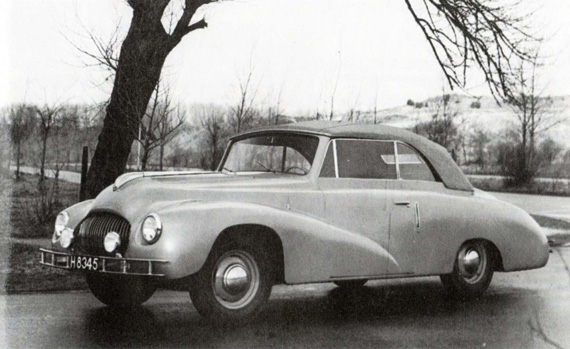
This large convertible does not resemble any of the other Gatso cars. Officially called the Gatso 4000 Luxe, this unique model was built in 1950 on special order for a Dutch doctor in The Hague. It was based on a long-wheelbase Mercury chassis and equipped with a 4 liter Mercury engine, developing 110 bhp. But it was very luxuriously finished and even had an electrically operated folding roof.
After winning the Barclay Challenge Trophy for the best performance of a British car in the 1950 Monte Carlo Rally (with teammates Klaas Barendrecht and Bob Spencer) in the heavy Humber Super Snipe, he was engaged by the management of the Rootes Group to compete in rallies with their Sunbeam Talbot. Other British manufacturers such as Jowett, Jaguar, and Aston Martin followed.
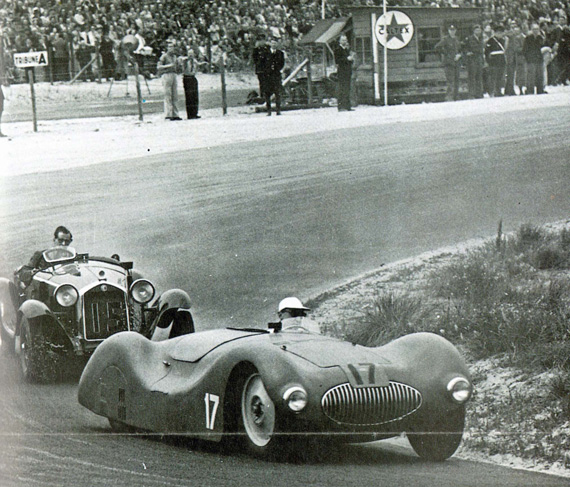
The last Gatso was this extremely low roadster nicknamed “Platje” (Flatty). It used a chassis of a Fiat 1500 with Dubonnet independent front suspension. The 6-cylinder OHV engine was also of Fiat origin. Here we see Gatsonides enjoying himself in 1949 during a race against an Alfa Romeo at the Zandvoort Circuit.
Then in 1953, the team of Maurice Gatsonides and Peter Worledge drove a factory entered Ford Zephyr to outright victory in the Monte Carlo Rally. Gatso’s star as a professional competition driver was now rising fast and many factory teams contracted him.
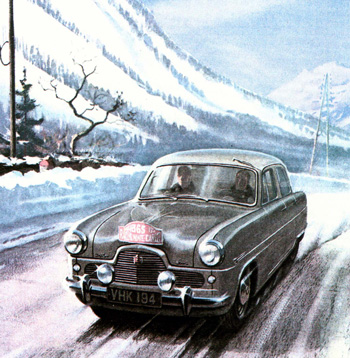
The 1953 Monte Carlo victory in a Ford Zephyr earned the team Maurice Gatsonides / Peter Worledge not only a large cash prize and a number of glittering cups, but also a place of honor on the front cover of the weekly supplement of the British newspaper ‘The Times.’
Because of his outstanding performances with Standard Vanguard and Triumph cars, he became a confidant of Ken Richardson, then competition manager of Triumph, who asked him to organize road tests of the Triumph TR3 for a few continental journalists. The test car was the one he had personally driven with great success in the Alpine Rally. By then I was technical editor of Autovisie magazine and one of the lucky ones. Gatso and I met again in his cozy house in Bentveld where he lived when he was not preparing his participation in international rallies or races.
We also both participated in Caltex Performance Tests (economy runs) organized by the Royal Automobile Club of Denmark. The old fox, with his great rally experience, won this event driving a Citroën ID. I was very happy with my class win in a Renault Dauphine.
Gatsonides was not only an excellent driver; part of his success in rallies must undoubtedly be attributed to his intense preparation. Each year he spent several months in the south of France to reconnoiter the special stages or parts of the routes of the rallies in which he was going to drive.
He was also a keen and talented technician, as his Gatso sports cars proved. In the thirties he had been trained to be a flight engineer at KLM (Royal Dutch Airlines). During the dark years of WWII when there was no petrol available in the occupied countries, he successfully designed and manufactured gas generators on small trailers to drive cars and trucks by burning coal.
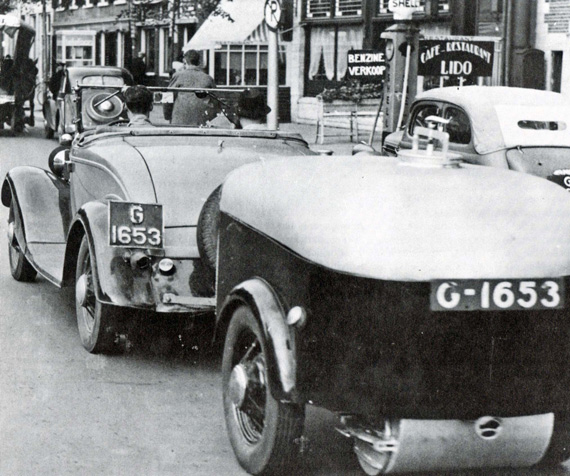
During the gloomy years of WWII Gatsonides designed and built gas-generators on small trailers. These ‘stoves’ permitted passenger cars and trucks to function on coal gas instead of petrol. The authorities allowed him to service and repair the generators he had sold. This gave him the opportunity to drive his own vans all over the German-occupied provinces of the Netherlands and to help the Dutch underground forces with transports of people and material. These trips were never without danger.
For many years he had been experimenting with equipment to provide exact measurements of time and distance for use during rallies. As early as 1938 – long before the Halda speed pilot came on the market – Gatsonides designed a special clock, which when connected to the speedometer drive of his rally car allowed him to drive at a preset average in qualification stages. After the war he perfected his instruments. As he was a fast driver, from time to time he also collected speed tickets, which led to another invention.
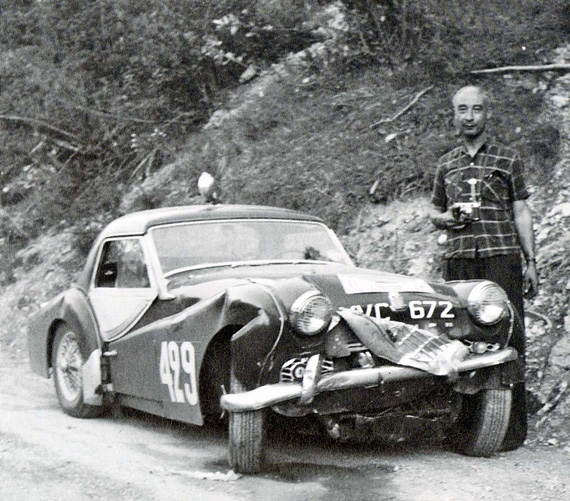
A mishap during the 1958 Alpine Rally cost him the coveted Alpine gold cup. But Gatsonides accepted defeats and failures with the same philosophic attitude as his many victories.
What often annoyed him was the clumsy way police officers timed their victims, using hand-held stopwatches and measuring the distance by looking at two separate objects, such as trees or lamp posts. This gave him the idea to eliminate the human error in time measurement and led to the development of the famous (or if you wish infamous) “Gatso meter.”
With the help of Cees van Munster, an acquaintance and instrument maker in Amsterdam who had in the past built several timing devices for use in his rally cars, Gatsonides built a pulse counter that could measure 100 pulses per second. The system was activated by two thin rubber tubes incorporating sensitive micro switches, which were placed exactly 10 meters apart. It worked perfectly.
To get his invention accepted by the law enforcement authorities, he arranged with the local police to try out his Gatso meter. He drove his car past the police trap, followed by his son Tom on a moped. Both went over the speed limit so the police had to give them a ticket. Their case came to court, father and son were convicted and had to pay a fine. However, the news that the famous rally master and his son had been caught speeding by his own invention was of course quickly picked up by the media. This ‘free’ publicity attracted many inquiries from police forces in the Netherlands, Britain and France.
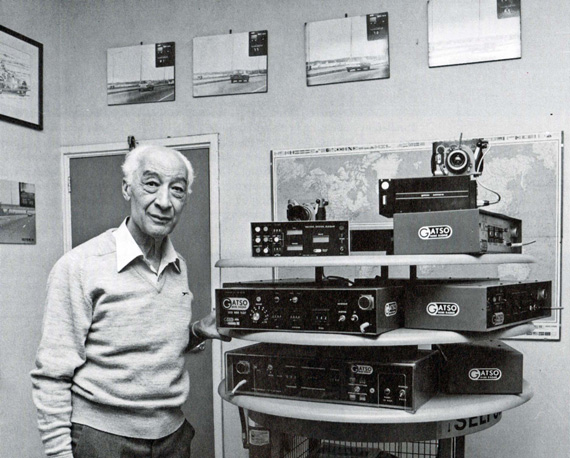
With the same enthusiasm and thoroughness he displayed during his years as a professional competition driver, he later developed the Gatso speed measuring equipment. These Gatso meters were not only used by many police forces as speed traps but also became also popular in sporting events that needed exact time registration.
To promote the Gatso meters, his company also rented exhibition space at the Amsterdam Motor show and Intertraffic, a specialized trade fair. Thus our paths crossed again. At that time I was – among other things – responsible for the planning of the visits by ambassadors and other VIP’s at the Amsterdam Exhibition Centre. Believing that most people are interested in the way modern speed traps work, I always tried to include a visit to the Gatso stand.
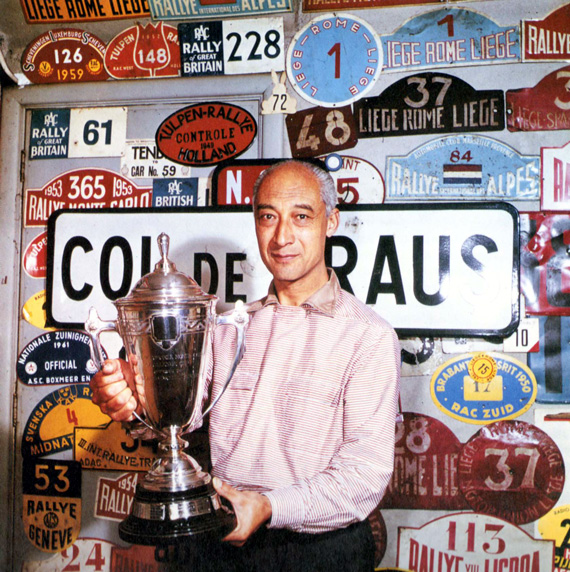
Gatsonides amidst his over 150 competition souvenirs and proudly displaying the Barclays Bank Challenge Cup, which he won definitively with his 1953 Monte Carlo win.
A short time before he passed away in 1998, we met for the last time during a conference at the occasion of the Amsterdam Motor Show. He was looking frail and told me that he had been in the hospital, but he had the good fortune to have the well know Dutch writer Toon Kortooms as a roommate. They had talked and laughed a lot and Kortooms had just published a book (the third about Gatso’s adventures). Gatso insisted on give me a copy and wrote the dedication ‘From your first boss.’ This copy still has a place of honor in my bookcase, because even if my apprenticeship had been short, during our many meetings I picked up a few very worthwhile lessons from him: “Never despair when things are not turning out as you expected, but try again. Remain inventive and flexible.”
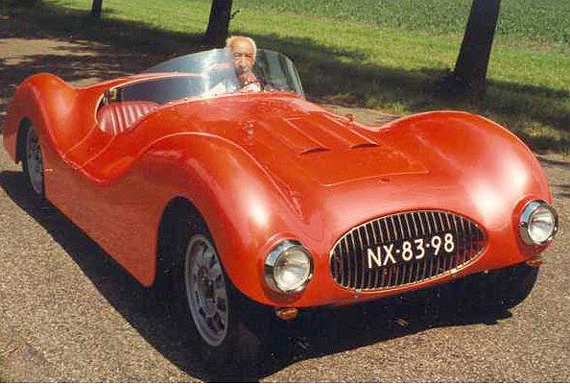
In 1991 Maurice Gatsonides was reunited with his favorite Gatso ‘Flatty.’ During his financial problems in the fifties the liquidator had sold this car for a ridiculous sum. Fortunately the Dutch collector Joop Bruggeman recovered it and restored it to its former glory.
BIBLIOGRAPHY
Rallies and Races, Gatsonides’ Adventures by William Leonard (W.L. Brugsma). First published in Dutch in 1950. English edition published by Foulis & Co, London in 1951. Paperback 238 pages.
Gatso, ‘The never ending race’ By Michael Allen and Maurice Gatsonides with contributions by Rob Wiedenhof, Published by Gatsometer BV, Overveen Holland in 1990.
ISBN: 90-90066226-2. Hardcover 240 pages.
This English language edition is partly based on the Dutch book
Gatso, ‘Race zonder Finish’ By Piet Philippa and Rob Wiedenhof.
Leven als de Biksem (Living like the Lightning) By Toon Kortooms (only in Dutch) Published by J.H Gottmer, Haarlem, Netherlands in 1995. ISBN 90 257 2783 2 / NUGI 642
_________________
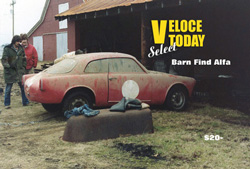 VeloceToday Select Number Two:
VeloceToday Select Number Two:
Barn Find Alfa
Edited by Pete Vack
_________________
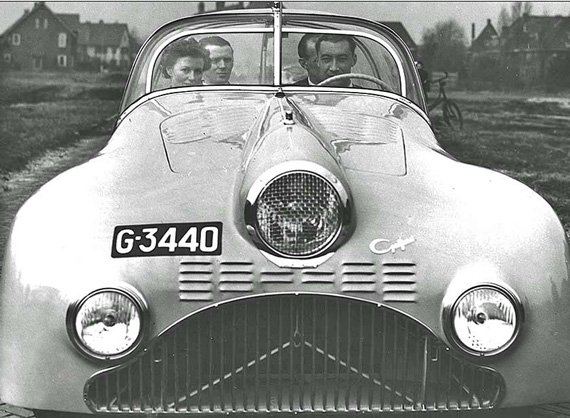
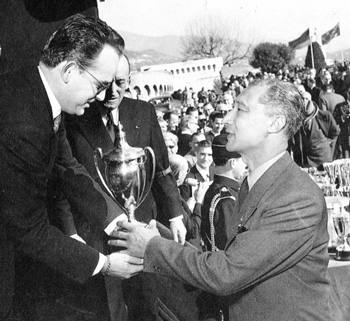
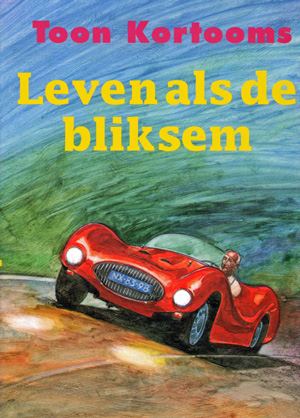
I believe I’ve seen the car at ‘The Gallery’ in Brummen ( NL ). You can buy it for around € 150.000,- I believe. A very special car.
I drive a ‘Lawler Special’ ( Tornado Typhoon based ). It’s a little bit younger then the ‘Gatso’ but looks great anyway. Nice looking SportsCars with a lot of influences in ‘sportscarstyling’ . Very small factories made these cars and sometimes You can find them back for a reasonable price to restore.
The comment by Arie van Wijngaarden is correct. The orange colored, Fiat based, Gatso (Platje) has indeed been exhibited at the Gallery in Brummen, (near Arnhem in the Netherlands). I do not know if it is still for sale. For further information contact Mr. Nico Aaldering the proprietor of the Gallery, Telephone ++31 (0)575 56 40 55.
–Gijsbert-Paul Berk